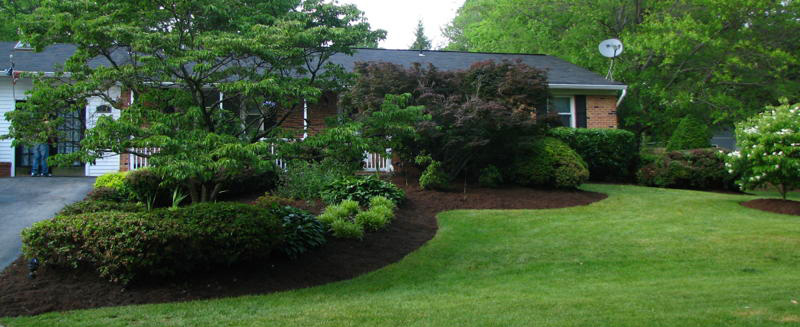What's a homeowner to do if he wants a beautiful lawn but in a time-friendly, cost-friendly and earth-friendly way? We're here to help.
Water Correctly

First things first: If you don't have an automatic sprinkler system, install one. It takes the guesswork out of watering so you don't overdo it. Your goal is to moisten as much of the root system as possible at one time. Avoid frequent, shallow watering; soak lawns in clay soil once a week, and sandy soil every three days, depending on the season. Set the system to operate in late evening or early morning, when water doesn't evaporate as quickly and pressure is generally optimal. Don't water the entire lawn simultaneously; instead, rotate through the zones, covering each area at least twice.
Boost The Health of Your Lawn

Healthy lawns use less water and have fewer weeds and insects than neglected ones. But don't assume that means you must use fertilizer. Pick up a soil-test kit first to determine whether your lawn has any nutrient deficiencies. When mowing, set the deck to about 3 inches, and remove no more than 30 percent of the height. Leave clippings in place to recycle nutrients and moisture, as well as to shade the lawn. When a layer of thatch ½-inch thick forms just above the soil surface, use an aerator to remove cores of sod (for best results, wait until spring or fall). Then top-dress the turf with compost.
Make Mowing Easy

Properly mowed turf loses less water through evaporation, or, in garden-speak,evapotranspiration. And a hard-to-mow lawn is more likely to get neglected. So make cutting it as easy as possible. If you don't have a zero-turn riding mower, shape your lawn's corners with curves so you never need to back up. Curves also accommodate pulsating, revolving sprinklers, which are more efficient than oscillating types because they shoot water directly over the lawn rather than straight up. You can also lighten your workload by installing edging below grass height; that way you won't need to clean up the perimeter with a string trimmer.
Reduce The Amount Of Lawn

Additionally, you can carve out new planting beds for perennials and trees which require about half as much water as grass, once established. Less water used, less lawn to mow.

Choose Better Grass

Here in the North the best grasses to use for your lawn are fine fescues (hard, creeping red, chewings, and turf-type sheep fescue). They make a great drought-tolerant, low-maintenance turf.
Source: MSNRealEstate.com and Michelle Schwake for Stafford Family Realtors

No comments:
Post a Comment